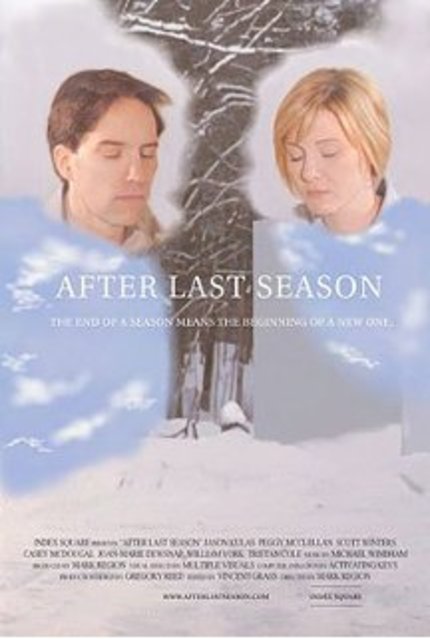Film Review: Mark Region's AFTER LAST SEASON

In late March 2009, a trailer for a film called After Last Season appeared on the Internet. This cryptic trailer featured a litany of weirdness, including a cardboard box masquerading as a MRI machine, Rubbermaid containers shuffling across a floor, ultra-crude 3D computer graphics, and seemingly stunned actors delivering dialogue in dazed monotone. The trailer raised numerous questions. Was this a real movie? If so, was it an elaborate put-on? The answer to the first question is "yes." Index Square, which is the company behind After Last Season, somehow managed to get a four city 35mm theatrical release through Cinemark. As to the second question, the answer is definitely "no." The film is not a put-on. After Last Season is, however, so genuinely and startlingly bad that a movie cult will undoubtedly form around it.
Describing the plot is not really useful but the film revolves around two medical students: Matthew Andrews (Jason Kulas) and Sarah Austin (Peggy McLellan). There is a serial killer loose on campus and one of their classmates falls victim to the killer's blade. Matthew and Sarah both intern at the Prorolis Corporation, which is a lab doing experimental brain research. Through Prorolis, Matthew obtains two experimental neural chips that allow the one-way transmission of thoughts in the form of 3D graphics. Matthew and Sarah use these visualizations to piece together the puzzle of why their classmate was killed. At some stage, an invisible force intrudes on their puzzle-solving and starts kicking around office supplies and Rubbermaid containers.After Last Season ties all of these threads together, but the resolution is, to say the least, unconventional.
Unbelievably, the film's trailer, including the editing, is representative of the entire movie. The very first scene, which involves the cardboard MRI machine, is supposed to take place in a hospital room. The scene was obviously shoot in the bedroom of somebody's house. There is barely any effort to hide this fact. All the scenes are shot in people's rooms or unfurnished spaces with no effort make them resemble the locations that they are supposed to represent. Impromptu props made of cardboard and other discarded material are everywhere. The actors are completely straight-faced; there is not a hint of irony in the delivery. The performances are casual yet completely unnaturalistic. The matter-of-fact dialogue doesn't help. Conversations come across as alternating statements with no relation to each other. In fact, the performances seem disconnected from the overall narrative as if they occurred in a black box. This is apparently due to the fact that the director often shot individual lines and cut together entire scenes from the individual takes.
Technically, After the Last Season, which was shot on 35mm, is all over the place. The colors, and perhaps the stock, changes between shots, and even within single scenes. Some scenes are perceptibly out-of-focus. There is a pervasive, muffled background noise. Scenes come and go with no continuity or explanation. Conversations often cutaway to shots of furniture and other items for no reason. A large part of the movie consists of the previously mentioned computer graphics, which are brutally crude. Although these graphics fit into the story, film leans heavily on them to pad out the 93 minute running time. Thus, the parade of colored circles, cylinders, birds, and fish tends to goes on and on as if the film went on pause and a screen saver kicked in.
This review has expended hundreds of words in an attempt to convey the nature of After the Last Season but this is a film that requires direct experience to comprehend. Even then, its mysteries will not completely reveal themselves.







